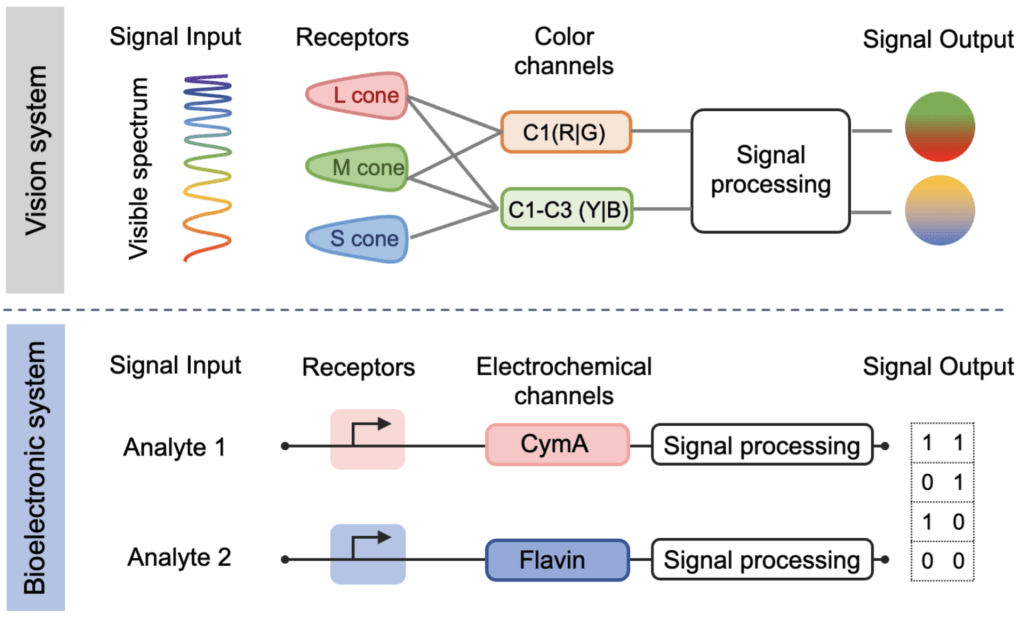Congratulations to Robyn Alba for securing a NSF Graduate Research Fellowship! This prestigious award will support her study on extracellular electron transport and biosensors.
Houston Chronicle covers new Rice Synthetic Biology Institute
The article entitled “Rice University launches synthetic biology, water institutes in boost for graduate program” covers the goals of both the RSBI and the new WaTER Institute. Dr. Ajo-Franklin was interviewed and posed these questions as the driving inquiry behind the RSBI:
“The fundamental science that the institute is about is, how do we manipulate DNA to create useful biotechnologies, and ones that will benefit society?” said Ajo-Franklin, professor of biosciences, engineering, and chemical and biomolecular engineering. “How do we create therapeutics that are essentially manufactured on demand in the body? How are we creating materials that are more sustainable?”
Rice U. launches synthetic biology institute with Dr. C. Ajo-Franklin at the helm
Rice University is expanding it’s commitment to synthetic biology with the newly minted Rice Synthetic Biology Institute (RSBI). Led by Director Caroline Ajo-Franklin and an interdisciplinary steering committee, the RSBI will facilitate even more collaborative research and the development of technologies that benefit society. Its initial focus will be on living materials, living therapeutics, living electronics, and exploring ethical, legal and social implications of these technologies. Read more about the RSBI here.
Executive Director Position Open in the Rice U. Synthetic Biology Institute
The newly formed Rice Synthetic Biology Institute (RSBI) is seeking an Executive Director. This is an opportunity to work with Dr. Caroline Ajo-Franklin to catalyze collaborative research in synthetic biology at the university and translation of that research into technologies that benefit society.
Please find the job posting here. This is an onsite opportunity.
New Pub Alert! Extracellular electron uptake from a cathode by the lactic acid bacterium Lactiplantibacillus plantarum
Congrats to former CAF group member Dr. Sara Tejedor-Sanz, as well as Siliang Li and Biki Kundu for their new publication in Frontiers in Microbiology. This work is the first demonstration of extracellular electron uptake from a cathode by the fermentative Lactiplantibacillus plantarum. Read the paper here.
Also check out Sara’s publication “Lactiplantibacillus plantarum uses ecologically relevant, exogenous quinones for extracellular electron transfer” which has been accepted at mBio.
New Pub Alert! Selective bioelectronic sensing of pharmacologically relevant quinones using extracellular electron transfer in Lactiplantibacillus plantarum
Congratulations to Siliang, Carol, and Joe for their recent publication in Biosensors and Bioelectronics! They developed a whole-cell bioelectronic sensor that can sense 1,4-dihydroxy-2-naphthoic acid within seconds and is capable of continuous monitoring. In a simulated gut environment, the sensor was selective for relevant quinones and they present a predictive multivariate model to describe the mechanism. This platform has significant application for environmental monitoring and human health. Read the paper here.
Dr. Ajo-Franklin named a collaborator on the Laboratory-University Collaboration Initiative
Caroline will collaborate with the Naval Research Laboratory’s Tanya Tschirhart on the project “Connecting Electron Flow and Gene Expression in Cells for Multi-Channel Electrogenetics.” Dr. Tschirhart is a fellow in the Department of Defense’s 2023 class of the Laboratory-University Collaboration Initiative. Read more here.
Dr. Ajo-Franklin featured in Phys.org article!
The American Society for Microbiology published an article entitled “Bacterial biosensors: The future of analyte detection” in which Caroline discussed the development of whole-cell biosensors for environmental and human health. Read it here!
New Preprint Alert! Multichannel bioelectronic sensing using engineered Escherichia coli
Congrats to Dr. Xu Zhang for her new manuscript on bioRxiv! Xu successfully integrated two separate extracellular electron transfer pathways controlled by different sensing modules into E. coli. Along with an agnostic algorithm she developed, this platform is capable of simultaneously sensing different heavy metals in urban water samples and transmitting a 2-bit binary readout. This is an important step forward in the informational capacity of bioelectronic sensors. Read more here!

Carol passed her A exam!
Congratulations to Carol De Groote Tavares for passing her Admission to Candidacy exam! Carol studies electrogenetics in Lactiplantibacillus plantarum and is a real credit to the program. Read about our group’s work on extracellular electron transfer in L. plantarum here.
